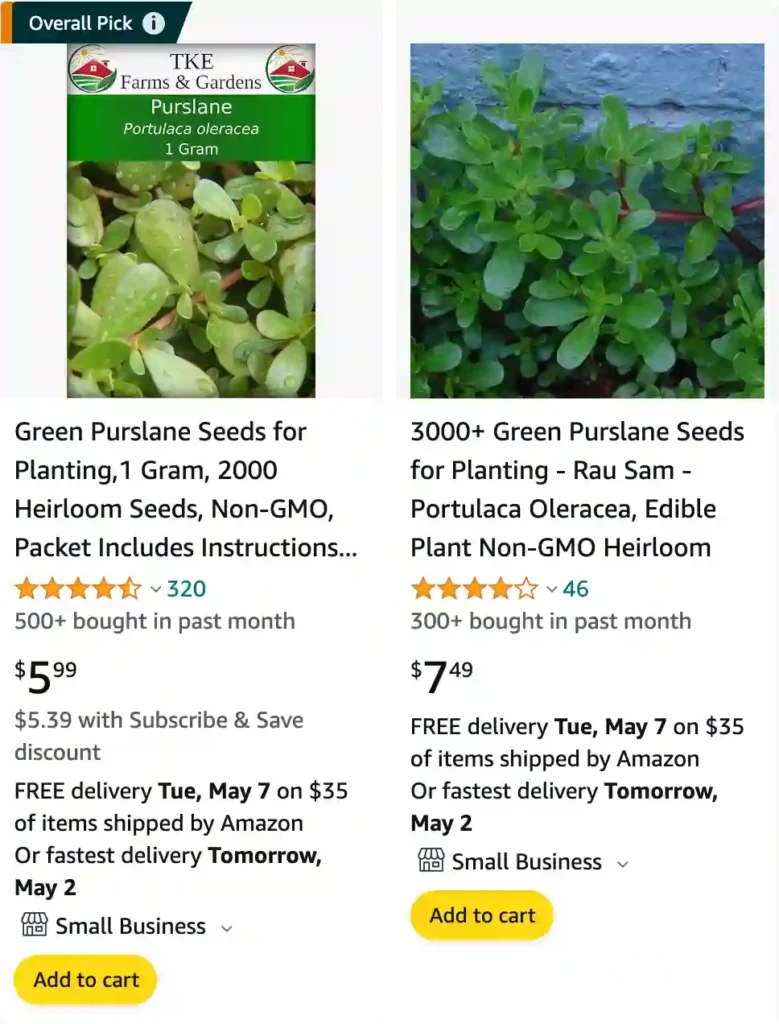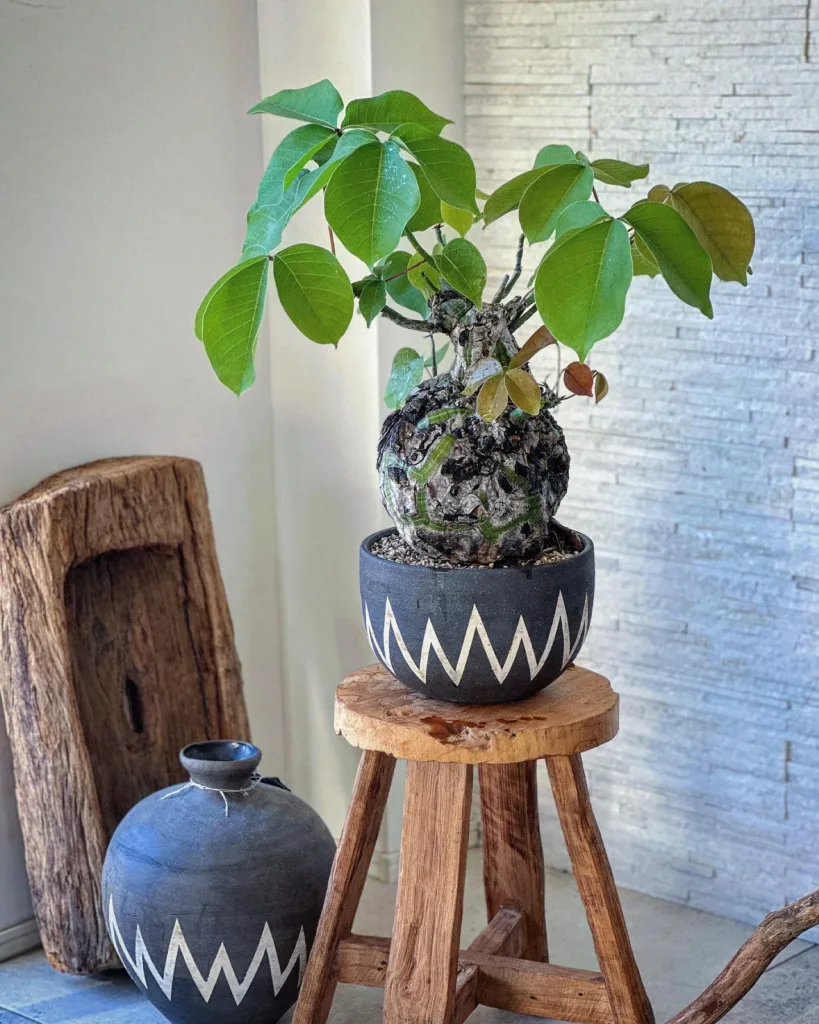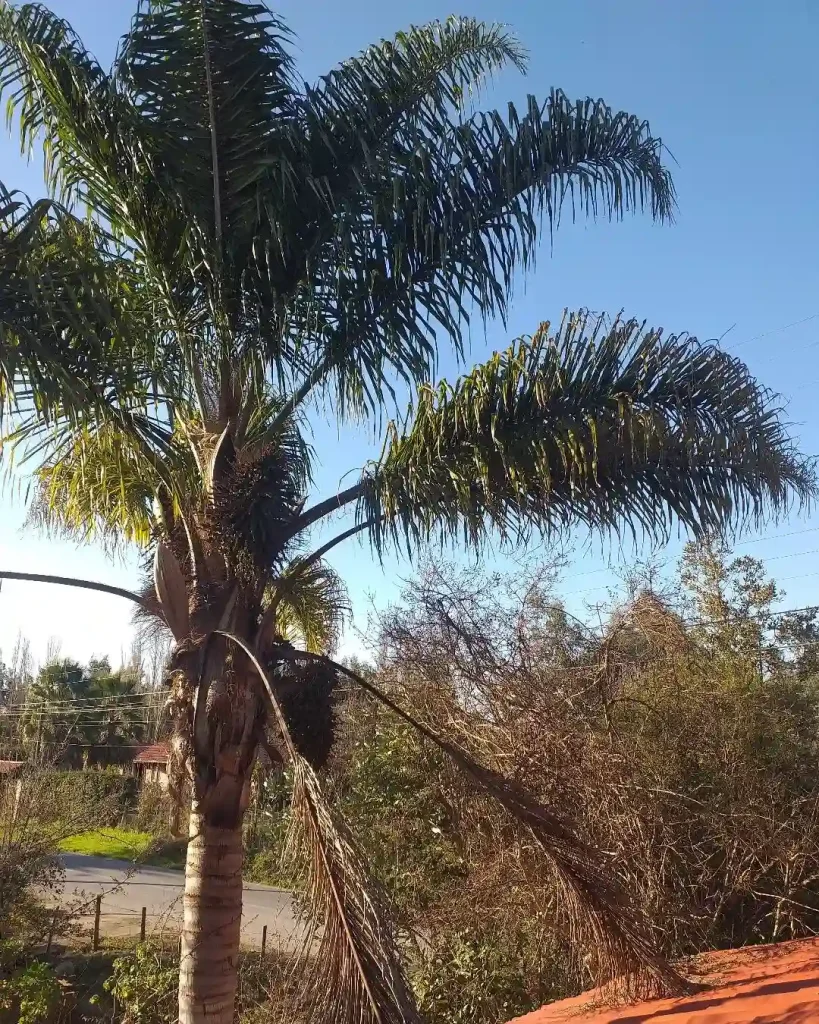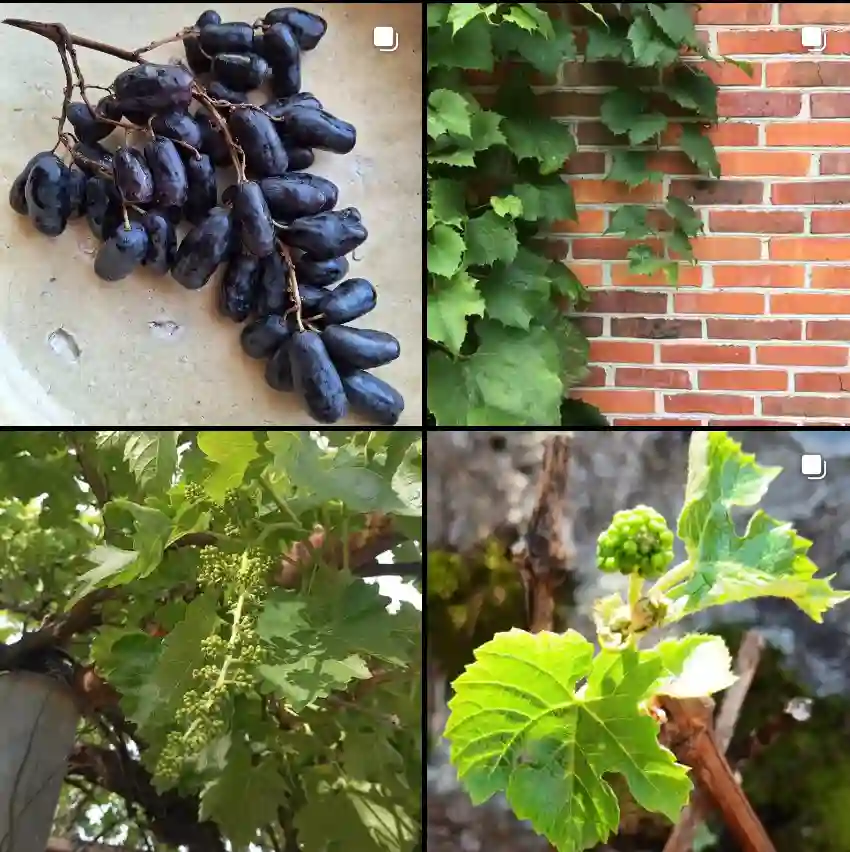
What does purslane look like?
Purslane is this little green surprise that pops up everywhere in my garden. It’s kind of like a tiny, misplaced jade plant. The stems are these reddish-purple, fleshy things that snake along the ground, and the leaves are these small, bright green ovals that feel smooth and cool to the touch. They’re almost a bit squishy, like a really plump bean sprout. The whole plant stays low to the ground, sprawling out in all directions. It’s kind of funny looking in a way, but there’s something about the bright color and the way it catches the sunlight that I find strangely endearing.
How to cook purslane?
I’ve had the best luck treating purslane like a mix of spinach and watercress. Sauteing is my favorite way to cook it. First, I pick through the purslane to remove any woody stems and just keep the tender leaves and smaller stalks. A quick rinse is all it needs. Then I heat up some olive oil in a pan and toss in some garlic and shallots for a bit of flavor. The key is not to overcook the purslane – a few minutes until it wilts is perfect. It cooks down surprisingly fast, so don’t walk away! A squeeze of lemon juice and some salt and pepper at the end really brightens it all up. It’s a simple side dish, but the purslane adds this wonderful pop of fresh, slightly tart flavor that makes everything taste more interesting.
Is purslane a perennial?
This is where things get interesting with purslane! In most places, it acts like a stubborn annual. It sprouts in the spring like clockwork, happily grows all summer, then dies off when the frost hits. But here’s the thing – the little rascal throws out tons of seeds before it goes. And those seeds? They’re tiny time capsules waiting for the perfect moment. So, come next spring, I can pretty much guarantee I’ll be seeing purslane popping up again in all sorts of unexpected places. It’s like a game – I try to pull them all up before they take over, but those sneaky seeds always win out in the end. However, I’ve heard that in warmer climates (like zones 10 or 11), purslane can actually survive the winter and come back year after year as a true perennial. Maybe one day I’ll be lucky enough to experience that, but for now, I’m stuck with its enthusiastic annual appearances!
How to grow purslane?
Purslane is a trooper in my garden. It practically grows itself! The key is to find a spot that gets plenty of sun – at least 6 hours a day seems to make it happiest. As for soil, purslane isn’t picky. It’ll grow in just about anything, but I’ve found it thrives in well-drained, slightly sandy soil. In fact, it pops up more often in the cracks between my paving stones than anywhere else! Seeds are the way to go – forget trying to find transplants at the nursery. They’re tiny, so I just sprinkle them directly on the soil, barely covering them with a dusting of dirt. Water them gently with a spray bottle to avoid washing them away. Before I know it, little green sprouts appear, and within a few weeks I’ve got a whole purslane patch going. The best part? I barely have to water them at all. Purslane seems to love the heat and can handle drying out a bit between waterings. It’s the perfect low-maintenance veggie for someone like me who forgets to water things as often as they should!
Is purslane toxic to dogs?
Absolutely! Unfortunately, my beloved purslane is a total no-go for my furry friends. I learned this the hard way after one of my pups decided the purslane patch looked like a tasty salad bar. Luckily, I caught him before he could eat too much, but let me tell you, it was a scary experience. Apparently, purslane contains something called calcium oxalate which is really toxic to dogs. It can cause all sorts of problems, from vomiting and diarrhea to tremors and even kidney failure. Needless to say, I keep a close eye on my dogs now and make sure they stay well away from the purslane. It’s not worth the risk! There are plenty of other safe, dog-friendly greens out there they can much on instead.
Where to buy purslane?
Honestly, I haven’t had much luck finding purslane for sale around here. It’s more of a “weed you learn to love” situation for me. Maybe bigger grocery stores or specialty markets carry it, but I haven’t spotted it myself. However, with how easy it is to grow, your best bet might be to try starting your own purslane patch. Like I said, it’s practically foolproof! There are also online seed sellers that specialize in heirloom or unusual vegetables, and purslane might be one of them. It’s worth a shot if you’d rather not wait for it to pop up in your garden on its own.
How to kill purslane? Will vinegar kill purslane?
Vinegar can definitely take a whack at purslane, but let me tell you, this weed is a fighter. I’ve had some success with a vinegar spray. I mix equal parts white vinegar and water in a spray bottle. A sunny day is best for this purslane-slaying mission! The sunshine helps the vinegar concentrate work faster. I target the leaves directly, trying to soak them good. It’ll wilt the plant some, but purslane is tough and can bounce back. For bigger purslane patches, this might not be the most effective method. Honestly, pulling them up by hand is probably the most reliable way to get rid of them, even if it is a pain. Just gotta make sure you get the whole root, otherwise those sneaky little purslane will just sprout right back up. There are also some weed killers out there that target broadleaf weeds, but I try to avoid chemicals whenever possible. So yeah, vinegar can help, but be prepared for a purslane wrestling match!
Can chickens eat purslane?
You bet my chickens love purslane! It’s like a free, healthy snack growing right there in their run. They gobble it up like it’s candy. The best part? Purslane is actually really good for them. It’s packed with vitamins and minerals, and even has more omega-3 fatty acids than any other leafy green! I’ve heard some folks even say it helps boost the omega-3 content of their eggs. Haven’t noticed a difference in the eggs myself, but the chickens seem happy and healthy, and that’s what matters. Sometimes I toss them a big handful when I’m weeding the garden, and it’s like a tiny feeding frenzy! They chase each other around squawking and pecking, and it’s pretty entertaining to watch. So yeah, purslane is a definite thumbs-up for my feathered friends.
Does purslane come back every year?
In my experience, purslane acts like a determined annual most of the time. It pops up in the spring without fail, thrives all summer, then dies off with the first frost. But here’s the thing – that little rascal is a champion seeder. Those tiny seeds it throws out before winter are like little time capsules just waiting for the perfect conditions. So come next spring, I can pretty much guarantee I’ll be seeing purslane sprouting up again in all sorts of unexpected places. It’s like a game – I try to pull them all up before they take over, but those sneaky seeds always seem to win out in the end.
However, I’ve heard that in warmer climates (like zones 10 or 11), purslane can actually overwinter and come back year after year as a true perennial. Maybe one day I’ll be lucky enough to experience that purslane paradise, but for now, I’m stuck with its enthusiastic annual appearances and constant game of seed-based hide-and-seek!
Do deer eat purslane?
This is where the info gets a little interesting! Deer and purslane can be a bit of a gamble. Generally, purslane isn’t on a deer’s preferred menu. It’s a bit on the sour side and doesn’t have the same rich taste and nutrients of some other plants deer love to munch on. So, in most cases, your purslane patch is probably safe from deer devastation.
However, there are a couple of things to consider. First, if there’s not much else for deer to eat in the area, they might get desperate enough to nibble on some purslane. It’s kind of like that time I ate leftover candy corn because there were no cookies – not ideal, but it would do in a pinch. Second, young, tender purslane might be more tempting to deer than the more mature plants.
Can dogs eat purslane?
No way! Purslane is absolutely off-limits for my dogs, and let me tell you, it was a scary lesson to learn. These little green guys may look like a tasty salad bar, but they contain something called calcium oxalate which is toxic to pups. It can cause all sorts of problems, from vomiting and diarrhea to tremors and even kidney failure.
One of my dogs decided the purslane patch looked like a delicious treat, and I only caught him before he could have too much. It was a close call, and ever since then, I make sure they stay well away from that area of the garden. It’s just not worth the risk. There are plenty of other safe, dog-friendly greens out there they can enjoy instead.
Can rabbits eat purslane?
Absolutely! Purslane is a great treat for rabbits, in fact, it turns out my bunny friends can enjoy this little garden surprise just like my chickens. Here’s the good news: purslane is packed with vitamins and minerals that are perfect for keeping rabbits healthy. Plus, it’s got a surprising amount of omega-3 fatty acids, which are even more important for rabbits than for us humans.
Since it’s a succulent plant, purslane also adds some much-needed moisture to a rabbit’s diet. This is especially helpful during those hot summer months when staying hydrated is extra important. I usually introduce purslane slowly, just a small handful at first, mixed in with their regular hay and pellets. Rabbits love to nibble on new things, and purslane is no exception. They devour it with such enthusiasm!
It’s important to remember that everything should be given in moderation, even purslane. Too much of any new food can upset a rabbit’s sensitive tummy. But as a healthy occasional treat, purslane is a winner for my bunnies. It’s like a tasty vitamin supplement growing right there in the garden!
Can you freeze purslane?
You bet! Purslane actually freezes surprisingly well, which is a great way to enjoy this little powerhouse veggie throughout the winter. Here’s what I’ve learned:
There are two main ways I tackle freezing purslane. The first is a simple blanch and freeze method. I quickly wash the purslane, picking off any tough stems. Then, I blanch it in boiling water for a minute or so, just until it starts to wilt. After that, it’s an ice bath to stop the cooking and preserve the bright green color. Once it’s cool and drained, I squeeze out any excess moisture and chop it up. Divvied into freezer bags or containers, it’ll last for months in the freezer, perfect for tossing into soups, stews, or even smoothies for a sneaky nutrient boost.
The other way I like to freeze purslane is a bit more flavorful. I basically make a purslane pesto! I blitz together purslane, some olive oil, garlic, a squeeze of lemon juice, and a pinch of salt in my food processor. This vibrant green pesto freezes beautifully and adds a wonderful pop of purslane’s unique flavor to pasta dishes, sandwiches, or even dolloped on top of grilled fish.
No matter which method you choose, freezing purslane is a great way to extend its season and enjoy its health benefits year-round. It’s like capturing a little bit of summer sunshine and tucking it away for later!
How to get rid of purslane in lawn?
Getting rid of purslane in your lawn can be a bit of a battle, but there are a few ways to tackle it depending on how widespread it is and how much effort you want to put in. Here’s what I’ve found works for me:
The Hand-Pulling Method:
This is the most eco-friendly option and works well for small infestations. The key is to be thorough and persistent. Pull up the entire plant, including the root system, whenever you see purslane popping up. Try to do this when the soil is moist as it will loosen up and make it easier to remove the whole root. Be careful not to leave any bits behind, because those sneaky purslane can sprout from even a tiny fragment.
The Vinegar Spray Method:
For a more targeted approach, you can try a vinegar spray. Mix equal parts white vinegar and water in a spray bottle. Apply it directly to the purslane leaves on a sunny day. The vinegar will act as a herbicide and wilt the plant. However, this method might not be strong enough for large patches and may need to be repeated every few days, especially as new growth emerges.
The Herbicide Option:
If you’re dealing with a significant purslane invasion, a selective herbicide might be the way to go. Look for a product labeled to target broadleaf weeds and specifically mention purslane on the label. Always follow the application instructions carefully and be sure to choose a herbicide safe for use on lawns. Remember, this is a chemical solution, so it’s important to weigh the pros and cons before using it, especially if you have pets or children who frequent the lawn.
Preventative Measures:
The best defense against purslane, like any weed, is a healthy lawn. A thick, lush lawn with strong roots will naturally crowd out weeds like purslane. Regular mowing at the appropriate height for your grass type, proper watering, and aerating occasionally will all help create a healthy lawn that’s less susceptible to weed invasion.
Remember, persistence is key! Purslane loves to reseed itself, so you might need to employ a combination of these methods to keep it under control. But with some effort, you can win the battle against purslane and have a purslane-free lawn to enjoy.
Is purslane toxic to cats?
Absolutely! Purslane is definitely off-limits to my feline friends. Just like with my dogs, it was a scary lesson learned. These little green plants might seem like a tempting nibble, but they contain something called calcium oxalate which is toxic to cats. It can cause all sorts of problems, from vomiting and diarrhea to trouble urinating and even seizures.
I once caught my cat batting at a purslane sprout, and let me tell you, my heart jumped into my throat. Luckily, it was just a quick swat and he didn’t actually eat any. But ever since then, I’m extra vigilant about keeping purslane out of his reach. It’s just not worth the risk. There are plenty of safe, cat-friendly plants out there to keep them occupied, like catnip or cat grass.
Can guinea pigs eat purslane?
Yes, guinea pigs can eat purslane in moderation! It’s actually a healthy treat for them, packed with vitamins and minerals. However, there are a few things to keep in mind:
- Limited quantities: Purslane is high in oxalates, which can be harmful to guinea pigs in large amounts. Think of it as a special occasion snack, not a dietary staple. A small handful two to three times a month is plenty.
- Variety is key: A balanced diet is important for guinea pigs. Offer purslane alongside their regular hay, pellets, and other safe vegetables like romaine lettuce, bell peppers, and carrots.
- Wash it well: Just like any other veggie, give purslane a good rinse under clean water to remove any dirt or pesticides.
Overall, purslane can be a delightful and nutritious addition to your guinea pig’s diet. Just remember to keep it as a occasional treat and offer it alongside their regular food for a well-rounded diet.
Can purslane grow in water?
Purslane can absolutely thrive in water, making it a great candidate for hydroponic gardening! Here’s what I’ve learned about this interesting way to grow purslane:
- It’s a trooper: Purslane’s natural resilience comes into play here. While most plants need soil for root development, purslane can adapt and grow roots in just water.
- Start with cuttings: You don’t need seeds for this method. Take healthy stem cuttings from your purslane plant, ideally with a few nodes (the little bumps where leaves grow). Remove any lower leaves that might get submerged in the water.
- Fresh, clean water: Use filtered or tap water that has sat out for 24 hours to allow chlorine to dissipate. A container like a jar or vase works well.
- Light and warmth: Place your purslane cuttings in a spot that gets plenty of sunlight, at least 6 hours a day. Warm room temperature is ideal.
- Monitor the water: The water level should just reach the base of the stems, not submerge them completely. Change the water every 3-4 days to keep it fresh and oxygenated.
- Roots and growth: Within a week or two, you should see roots sprouting from the nodes. The cuttings will start to grow new leaves.
Purslane grown hydroponically might not get as bushy as those in soil, but it can still produce tender leaves for salads or stir-fries. It’s a clean, low-maintenance way to enjoy this little powerhouse veggie indoors year-round. Plus, watching the roots grow in water can be a fascinating process!
Can purslane grow indoors?
Absolutely! Purslane is a surprisingly versatile little plant that thrives both indoors and outdoors. In fact, it can be a great option for an indoor herb garden, especially for forgetful waterers like myself. Here’s why purslane is a great indoor choice:
- Sun worshipper: The key to happy indoor purslane is plenty of sunlight. Aim for at least 6 hours a day from a south-facing window if possible. If not, supplement with grow lights.
- Potting party: Purslane isn’t picky about soil, but well-draining is key. A standard potting mix works well. Choose a pot with drainage holes to prevent waterlogging.
- Seedy surprise: You can grow purslane indoors from seeds or cuttings. Seeds are readily available online and some garden centers. They’re tiny, so just sprinkle them on the soil and barely cover them.
- Low-maintenance friend: The beauty of purslane is that it doesn’t need constant coddling. Let the soil dry out slightly between waterings. Don’t overwater, as purslane can handle drier conditions.
- Harvesting bounty: Once the leaves reach a couple of inches long, you can start snipping them for salads, stir-fries, or even smoothies. The plant will continue to produce new growth throughout the season.
- Warmth matters: Purslane prefers warm temperatures. Aim for an indoor environment around 70°F (21°C). Avoid placing it near cold drafts or drafty windows.
With a little sunshine, some neglect-tolerant love, and a pot on a windowsill, you can enjoy fresh purslane right inside your home. It’s a fun way to add a touch of green and a burst of unique flavor to your indoor culinary creations.
If i die, water my plants!



